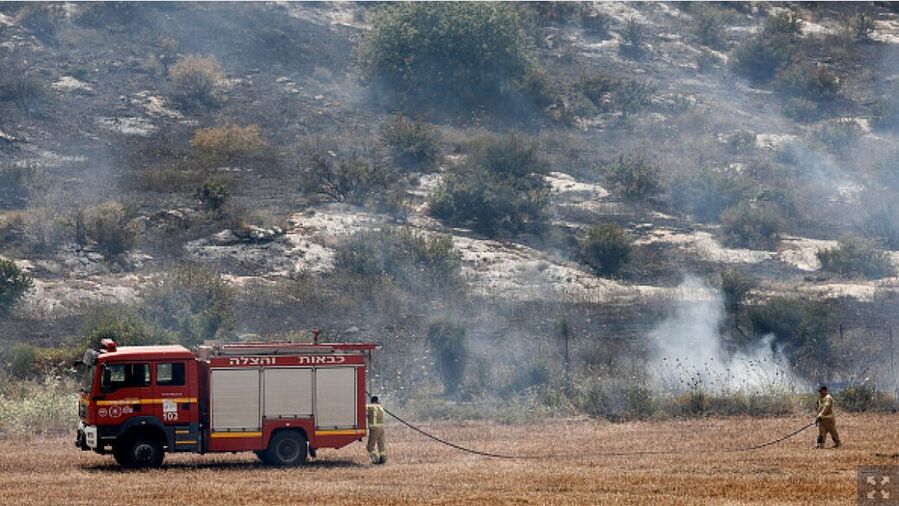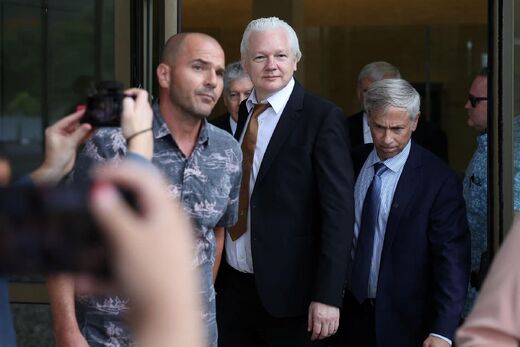
Acre and al-Nahariyah, some 20 kilometres and 7 km from the Lebanon-Israel border, respectively, had once been peripheral in the cross-border fighting between Israel and Hezbollah which started in the wake of Hamas's 7 October surprise attack.
But a weekend of fighting shattered the calm that prevailed in the two cities, sending residents scrambling to shelters and setting al-Nahariyah ablaze after a Hezbollah drone impacted the city.
In response, Israel carried out a series of airstrikes across southern Lebanon and launched white phosphorus on the Lebanese border town of al-Odeisseh, burning wide swathes of greenery.
"The escalation with which the resistance began aims to send a deterrent message to the Israelis that if you want to carry out military action in southern Lebanon, we are ready, and we have surprises," General Mounir Shehadeh, former Lebanese government coordinator with UNIFIL and former president of the permanent military court, told The New Arab.
Comment: Footage of the results of Hezbollah's retaliation:
Video shows an Israeli air defense platform exploding upon launch. A missile towards Iraqi marches in the southern Golan from the city of Afula today.
According to the Israeli Alma research centre, the month of May witnessed the highest number of attacks by Hezbollah against Israel, carrying out 325 attacks - an over one-third increase from the month prior.
"This escalation is primarily a response to the increase in Israeli strikes against south Lebanon, and secondly it's meant to support the resistance in Gaza," Kassem Kassir, a political analyst close to Hezbollah, told TNA.
Kassir added that the up tick in Hezbollah's operations was meant to instil deterrence against any possible Israeli escalation in Lebanon.
What have we seen from Hezbollah's arsenal?
Hezbollah has employed increasingly sophisticated weaponry as the war has dragged on, particularly over recent weeks.
In two separate attacks, Hezbollah used drones which flew long distances and hit precise targets within Israeli territory. Videos filmed by the Hezbollah drones showed small air-to-surface missiles being shot at a command-and-control centre of Israeli reconnaissance technology.
Comment: Indeed, the effectiveness of Hezbollah's retaliations are becoming evident: Hezbollah strikes Israeli base near border causing heavy damage and IDF casualties, downs another Hermes drone
Last week, Hezbollah employed a widening variety of weaponry in its attacks, using heavy Burkan rockets to attack the al-Baghdadi military site, a suicide drone against Iron Dome launchers and Soviet Grad rockets against targets in the western Galilee.
Much of the weaponry, including Hezbollah drones, managed to slip past the Iron Dome air defence systems.
According to General Shehadeh, Hezbollah has not used all the tools in its arsenal, estimating the Lebanese group has not used more than "20 percent of its combat capabilities."
Comment: This claim is echoed by various, independent, analysts.
Pressure growing in north Israel
Both Israel and Hezbollah have said that they do not want a full-scale war, despite the intensifying fighting between the two.
Within Israel, the more than 100,000 displaced northern residents have pressured the Israeli government to establish the security necessary for them to return home. Some residents have called on the Israeli government to launch an operation within Lebanon itself to push Hezbollah back from the country's border.
The mayor of Aaka, Amihai Ben Shlush, told Israeli media that he "wasn't receiving satisfactory answers" from the Israeli army on cooperation to protect the city.
Analysts have said that a war between Hezbollah and Israel would engender much greater damage than has resulted from the war in Gaza. Hezbollah is estimated to have an arsenal of at least 150,000 rockets.
In Lebanon, increasing Israeli airstrikes have increasingly affected civilians, killing two brothers working as shepherds on Sunday and a first responder on Friday.
At least 453 people have been killed by Israel since October, including 88 civilians, according to Agence France-Presse (AFP). On the Israeli side, at least 14 soldiers and 11 civilians have been killed by Hezbollah and affiliated groups.
In the past, the killing of civilians has been a trigger for more severe attacks by Hezbollah.



Only 6 soldiers from the chosen multiverse super army have died, everything else is fake news.